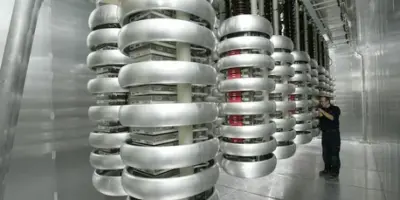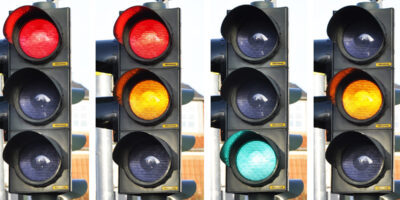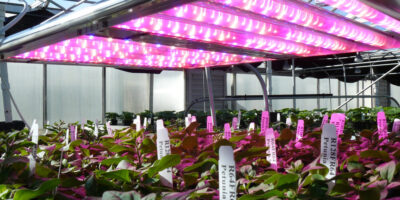Global Ion Sensors market is projected to reach USD 420.22 million in 2033, increasing from USD 202.29 million in 2023, with the CAGR of 7.6% during the period of 2024 to 2033.
Introduction
Ion sensors are analytical devices designed to measure the concentration of ions in various mediums, such as liquids and gases. They are critical for applications across diverse fields, including environmental monitoring, healthcare, industrial processes, and water treatment. This comprehensive overview will delve into the types, applications, market dynamics, competitive landscape, trends, opportunities, and regional analysis of the ion sensors market.
Types of Ion Sensors
Ion sensors can be classified based on their sensing mechanisms and applications. The primary types include:
1. Ion-Selective Electrodes (ISEs)
- Working Principle: ISEs use a selective membrane to detect specific ions based on the potential difference that develops between the membrane and the reference electrode. Common examples include pH electrodes and fluoride electrodes.
- Features: High specificity for target ions, suitable for various applications including water quality monitoring and clinical diagnostics.
2. Ion-Selective Field Effect Transistors (ISFETs)
- Working Principle: ISFETs detect ions by measuring changes in the surface potential of a semiconductor gate electrode covered by an ion-selective membrane. These changes alter the transistor’s threshold voltage.
- Features: Rapid response, miniaturizable, and suitable for integration into lab-on-chip devices and portable sensors.
3. Ion Chromatography Sensors
- Working Principle: Separate ions based on their interaction with a chromatographic medium and measure concentrations using detectors such as conductivity meters.
- Features: High resolution and ability to analyze multiple ions simultaneously, commonly used in environmental and chemical analysis.
4. Capacitive Ion Sensors
- Working Principle: Detect ions by measuring changes in capacitance due to ion adsorption on a dielectric surface.
- Features: Suitable for real-time monitoring and microfluidic applications.
5. Optical Ion Sensors
- Working Principle: Utilize changes in optical properties, such as fluorescence or absorbance, induced by ion binding to a selective reagent.
- Features: High sensitivity and selectivity, used in environmental monitoring and biomedical applications.
6. Conductometric Ion Sensors
- Working Principle: Measure the conductivity changes of a solution due to the presence of ions.
- Features: Simple design and useful for monitoring total ionic content in solutions.
Applications
Ion sensors are utilized in a variety of applications across multiple industries:
1. Environmental Monitoring
- Applications: Detection of pollutants, water quality monitoring, soil testing, and atmospheric studies.
- Importance: Essential for compliance with environmental regulations and protecting ecosystems.
2. Healthcare
- Applications: Blood electrolyte analysis, urine testing, and monitoring of physiological fluids.
- Importance: Crucial for diagnostics, patient care, and managing chronic diseases.
3. Industrial Processes
- Applications: Process control, chemical manufacturing, food and beverage production, and mining.
- Importance: Optimize processes, ensure product quality, and improve safety.
4. Water Treatment
- Applications: Monitoring and controlling ion concentrations in drinking water, wastewater, and industrial effluents.
- Importance: Maintain water quality standards and ensure public health.
5. Agriculture
- Applications: Soil nutrient analysis, fertilizer management, and hydroponics.
- Importance: Enhance crop yields and optimize resource use.
6. Laboratory Research
- Applications: Chemical analysis, biochemical assays, and research on ion behavior in various systems.
- Importance: Provide accurate data for scientific research and development.
7. Food Safety and Quality
- Applications: Monitoring ion content in food products, detecting contaminants, and ensuring compliance with safety standards.
- Importance: Ensure food quality and safety for consumers.
Market Dynamics
Growth Factors
- Technological Advancements: Innovations in sensor technology, including miniaturization, enhanced sensitivity, and integration with digital systems, drive market growth.
- Increasing Demand for Environmental Monitoring: Rising awareness of environmental issues and stringent regulations boost the demand for ion sensors in pollution monitoring and water quality assessment.
- Healthcare Innovations: The growing need for point-of-care diagnostics and personalized medicine increases the adoption of ion sensors in medical applications.
- Industrial Automation: The trend towards automation and smart manufacturing drives the demand for accurate and reliable ion sensors for process control.
- Agricultural Modernization: Increasing use of precision agriculture techniques to optimize resource use and improve crop yields fuels the demand for ion sensors.
Challenges
- High Development and Manufacturing Costs: Advanced ion sensors can be expensive to develop and produce, affecting their affordability and adoption in price-sensitive markets.
- Technological Limitations: Issues such as sensor drift, calibration complexities, and limited detection ranges can impact performance.
- Regulatory Compliance: Navigating complex regulatory requirements, particularly in environmental and healthcare applications, can be challenging and costly for manufacturers.
- Competitive Market: Intense competition in the sensor market can lead to price pressures and margin compression.
Opportunities
- Emerging Markets: Rapid industrialization and urbanization in emerging economies present significant opportunities for market expansion, especially in environmental monitoring, healthcare, and industrial applications.
- Integration with IoT and Smart Systems: The growing adoption of the Internet of Things (IoT) and smart systems creates opportunities for the integration of ion sensors into connected devices for real-time monitoring and control.
- Advancements in Miniaturization: Ongoing research and development in miniaturization and lab-on-chip technologies offer opportunities for developing compact and portable ion sensing solutions.
- New Applications in Biotechnology: The expanding field of biotechnology presents opportunities for ion sensors in applications such as genetic engineering, drug development, and biosensing.
Strategies for Market Competition
- Innovation and R&D: Investing in research and development to innovate and improve sensor technology, focusing on enhancing sensitivity, selectivity, and integration capabilities.
- Partnerships and Collaborations: Forming strategic partnerships with research institutions, environmental agencies, and industrial companies to develop tailored solutions and expand market reach.
- Cost Optimization: Implementing cost-effective manufacturing processes and supply chain management to reduce production costs and offer competitive pricing.
- Geographical Expansion: Expanding presence in emerging markets with high industrial and environmental monitoring needs.
- Product Diversification: Offering a diverse product portfolio to address various industry needs and applications, enhancing market penetration and customer base.
Receive the FREE Sample Report of Ion Sensors Market Research Insights @ https://stringentdatalytics.com/sample-request/ion-sensors-market/9496/
Market Segmentations:
Global Ion Sensors Market: By Company
• Alphasense
• NT Sensors
• Horiba
• Mettler Toledo
• Jiangsu SWR
• Zhengzhou Winsen
Global Ion Sensors Market: By Type
• Ca
• Mg
• Na
• Others
Global Ion Sensors Market: By Application
• Industrial
• Laboratory
Regional Analysis of Global Ion Sensors Market
All the regional segmentation has been studied based on recent and future trends, and the market is forecasted throughout the prediction period. The countries covered in the regional analysis of the Global Ion Sensors market report are U.S., Canada, and Mexico in North America, Germany, France, U.K., Russia, Italy, Spain, Turkey, Netherlands, Switzerland, Belgium, and Rest of Europe in Europe, Singapore, Malaysia, Australia, Thailand, Indonesia, Philippines, China, Japan, India, South Korea, Rest of Asia-Pacific (APAC) in the Asia-Pacific (APAC), Saudi Arabia, U.A.E, South Africa, Egypt, Israel, Rest of Middle East and Africa (MEA) as a part of Middle East and Africa (MEA), and Argentina, Brazil, and Rest of South America as part of South America.
Click to Purchase Ion Sensors Market Research Report @ https://stringentdatalytics.com/purchase/ion-sensors-market/9496/
Market Trends
1. Integration with IoT and Smart Systems
The integration of ion sensors with IoT platforms is a significant trend, enabling real-time monitoring and data analysis. This integration enhances functionalities like remote diagnostics, predictive maintenance, and environmental monitoring, driving the adoption of smart and connected ion sensing solutions.
2. Advancements in Miniaturization and Lab-on-Chip Technology
Ongoing advancements in miniaturization and lab-on-chip technology are leading to the development of smaller, more energy-efficient, and highly accurate ion sensors. These sensors are increasingly used in portable and point-of-care devices, enabling real-time and on-site ion analysis.
3. Rising Demand in Environmental Monitoring
The increasing focus on environmental protection and compliance with stringent regulations is driving the demand for ion sensors in pollution monitoring, water quality assessment, and soil testing. Ion sensors play a crucial role in detecting and quantifying pollutants, ensuring environmental safety.
4. Growth in Healthcare and Biotechnology Applications
The expanding applications of ion sensors in healthcare and biotechnology are contributing to market growth. Ion sensors are used in diagnostics, drug development, and biosensing, providing critical data for patient care, research, and medical innovations.
5. Focus on Sustainability and Green Technologies
Manufacturers are focusing on developing eco-friendly and sustainable ion sensing solutions. This trend aligns with global environmental regulations and consumer demand for green technologies, leading to the development of sensors with low power consumption and environmentally friendly materials.
6. Development of Multi-Functional Sensors
The trend towards developing multi-functional sensors that combine ion sensing with other capabilities, such as pH and conductivity measurement, is gaining traction. These sensors provide comprehensive analytical solutions for applications like water quality monitoring and industrial process control.
Opportunities
- Emerging Markets: Rapid industrialization and urbanization in emerging economies present significant opportunities for market expansion, particularly in environmental monitoring, healthcare, and industrial applications.
- Integration with IoT and Smart Systems: The growing adoption of IoT and smart systems creates opportunities for the integration of ion sensors into connected devices for real-time monitoring and control.
- Advancements in Miniaturization and Lab-on-Chip Technology: Ongoing research and development in miniaturization and lab-on-chip technologies offer opportunities for developing compact and portable ion sensing solutions.
- New Applications in Biotechnology: The expanding field of biotechnology presents opportunities for ion sensors in applications such as genetic engineering, drug development, and biosensing.
- Space and Aerospace Applications: Increasing investments in space exploration and commercial aviation create opportunities for ion sensors in life support systems, atmospheric studies, and space missions.
Market Analysis by Region
North America
- Market Size and Growth: North America holds a significant market share due to the presence of leading technology companies, robust industrial sector, and high demand from environmental monitoring and healthcare sectors.
- Trends: Emphasis on advanced healthcare technologies, environmental protection, and industrial automation drives market growth.
Europe
- Market Size and Growth: Europe is a major market, driven by strong environmental regulations, industrial advancements, and healthcare innovations.
- Trends: Focus on sustainability, smart manufacturing, and biotechnology influences market dynamics.
Asia-Pacific
- Market Size and Growth: Asia-Pacific is the fastest-growing market, attributed to rapid industrialization, growing healthcare sector, and increasing environmental awareness.
- Trends: Expansion of manufacturing capabilities, increasing adoption of advanced technologies, and rising demand for environmental monitoring contribute to market growth.
Latin America
- Market Size and Growth: The market in Latin America is growing steadily, driven by industrialization, environmental initiatives, and healthcare advancements.
- Trends: Increasing investment in infrastructure and manufacturing, along with growing environmental concerns, boosts demand for ion sensors.
Middle East & Africa
- Market Size and Growth: The market is developing, with opportunities arising from industrial expansion, water management, and healthcare innovations.
- Trends: Growth in oil and gas exploration, increasing healthcare investments, and industrialization drive market demand.
Forecast and Projections
The ion sensors market is projected to continue its growth trajectory over the next decade, driven by technological advancements, expanding applications, and increasing demand across various industries.
Projected Growth Rates
- Environmental Monitoring: Expected to see substantial growth due to rising environmental awareness and stringent regulations.
- Healthcare: Anticipated to grow significantly with the increasing adoption of point-of-care diagnostics and personalized medicine.
- Industrial Processes: Predicted to expand with the growing trend towards automation and smart manufacturing.
- Water Treatment: Forecasted to grow with the increasing focus on water quality and management.
Future Trends
- Development of Wireless Sensing and Connectivity: Advancements in wireless technology will lead to the development of wireless ion sensors for remote monitoring and IoT applications.
- Increased Focus on AI and Data Analytics: Utilizing artificial intelligence and data analytics to enhance sensor performance, predictive maintenance, and environmental control.
- Enhanced Integration with Smart Systems: Further integration of ion sensors into smart home and building automation systems, enhancing energy efficiency and environmental control.
About Stringent Datalytics
Stringent Datalytics offers both custom and syndicated market research reports. Custom market research reports are tailored to a specific client’s needs and requirements. These reports provide unique insights into a particular industry or market segment and can help businesses make informed decisions about their strategies and operations.
Syndicated market research reports, on the other hand, are pre-existing reports that are available for purchase by multiple clients. These reports are often produced on a regular basis, such as annually or quarterly, and cover a broad range of industries and market segments. Syndicated reports provide clients with insights into industry trends, market sizes, and competitive landscapes. By offering both custom and syndicated reports, Stringent Datalytics can provide clients with a range of market research solutions that can be customized to their specific needs.
Reach US
Stringent Datalytics
+1 346 666 6655
Social Channels:




Leave a Reply